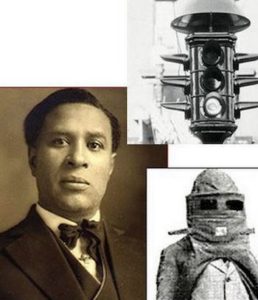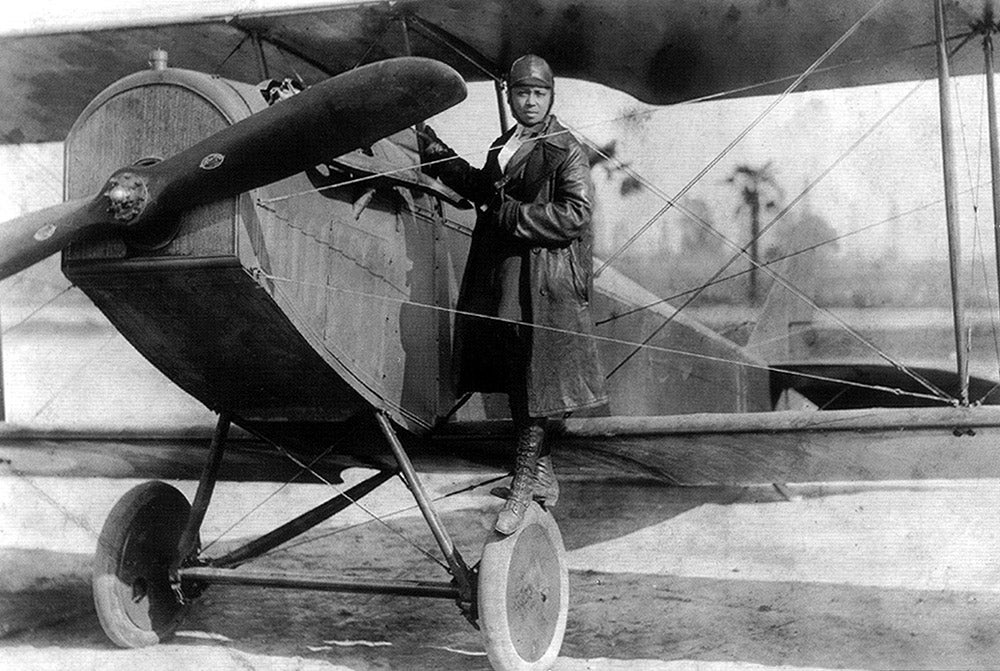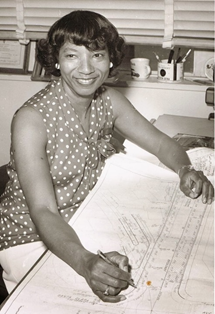The most notable African American in relation to the transportation sector is no doubt Rosa Parks, who famously refused to give up her seat on a public bus in Montgomery, Alabama, in 1955. But there are so many other leaders in the transportation sector who also made massive contributions to not only the industry but to civil rights throughout history. Many made their impact in the freight and logistics world.
To celebrate the end of Black History Month, here are some of the top African American figures in transportation history:
Garrett Morgan
Born in Paris, Kentucky, in 1877, Garrett Augustus Morgan grew up to make significant contributions to public safety on the road. Morgan’s most important contribution was likely patenting the traffic signal, according to Biography.com.

Morgan’s father was previously enslaved but freed in 1863, and his mother was a Baptist minister’s daughter of both Indian and African descent. His mixed heritage helped influence his business dealings as he grew older.
The future inventor’s interest in machinery began to spark while working at sewing machine factories, leading him to create a patent for a new design and open a repair business. This was the start of a wide range of patents that ran the gamut across many industries.
After opening his sewing machine repair business, Morgan married his wife, Mary Anne Hassek, a German seamstress. Together, the two later opened a tailoring shop. It’s here he discovered a chemical solution for straightening hair after searching for a way to prevent friction between sewing machine needles and fabric to avoid scorch marks. The hair solution guided him to yet another venture — a hair product company.
Throughout his life, Morgan moved on to create numerous other inventions, including gas masks for World War I. He often hired a white actor to present the gas mask, posing as its inventor to circumvent discrimination. However, when he saved two people during an explosion using his gas mask invention, the publicity surrounding that incident revealed him to be the real Garrett Morgan.
Morgan was also the first Black man in Cleveland to own a vehicle. He even created a friction drive clutch for automobiles.
Finally in 1923, the accomplished inventor came up with the idea to include a warning light in traffic signals to prepare drivers for the signal switching to stop. The thought came to him after witnessing an accident between an auto and a carriage accident at a dangerous intersection.
His patent for this device became the start of the tricolored traffic signal we know today.
Bessie Coleman
Bessie Coleman, popularly known as “Brave Bessie,” was the first woman of African American and Native American descent to earn a pilot’s license in the United States. Coleman was born to a Black woman in Atlanta, Texas, on Jan. 26, 1892, and her father of both Native American and African American descent, worked as a sharecropper.

Coleman was known for breathtaking stunts in the air and was an advocate for equal rights. The pilot’s life goal was to inspire other African Americans to follow their dreams no matter how big, according to the National Women’s History Museum.
She became obsessed with learning to fly after her brothers brought back tales of French female pilots they witnessed during World War I, ribbing her that she was not allowed to do so as an American. Coleman’s ethnicity and gender prevented her from gaining acceptance into any flight schools in the U.S. until she decided to take the leap and move to France.
However, the future pilot needed to submit her application to those flight schools in French, a language she did not know. So, Coleman began taking night classes to learn French until she was accepted into the Caudron Brothers School of Aviation in Le Crotoy, France. On June 15, 1921, the Fédération Aéronautique Internationale awarded her an international pilot’s license. According to Smithsonian magazine, she was the first Black woman ever to do so. After training for a bit in Germany, she returned home to the U.S.
Brave Bessie made a name for herself in one-woman air shows through daring stunts, known for impressive figure eights and loop the loops,” according to the National Women’s History Museum. She survived one crash after a mechanical failure, escaping with numerous cracked ribs, a broken leg and several cuts. But she persevered and bought her own plane, a Curtiss JN-4A “Jenny,” fitted with an OXX-5 9-cylinder engine.
Throughout her career, Coleman made public speeches across the country, gave flight lessons and encouraged more African American women to learn to fly. Though she refused to speak at any segregated locations.
When she returned to her hometown in segregated Texas to perform, officials attempted to create separate entrances for Black and white attendees. She refused to perform until managers agreed to one entrance and became known as a pioneer for standing up for her beliefs. However, the stadium seating itself remained segregated.
Unfortunately, her love of flying led to her death in 1926, when mechanic William Wills piloted a test flight with Coleman as the passenger. A loose wrench became stuck in the engine and Wills lost control of the plane, which flipped upside down at 3,000 feet. With no roof and Coleman not wearing a seatbelt, she fell to her death before the plane crashed a few feet away, killing Wills as well. Her legacy continued, though, setting the stage for many women to become pilots in the years following and inspiring many African American citizens in the U.S. to follow their dreams.
Frederick McKinley Jones
Another inventor, Frederick McKinley Jones made important contributions across numerous sectors and is responsible for significant strides in refrigerated shipping. Jones is credited with 40 patents in relation to refrigeration.

Jones was born May 17, 1893, in Covington, Kentucky, and lost his mother when he was 9 years old, forcing him to drop out of school, according to BlackPast.org. He served in France during World War I as an electrician, which stoked his interest in machinery.
Once he returned home, Jones created many different inventions while working at various jobs, drawing inspiration from daily problems. For instance, when working with doctors for in-home visits, he created a rudimentary “snow machine” vehicle to travel more easily through winter conditions. He also built and designed cars for racing at county fairs, according to the African American Registry.
Throughout the 1920s, the inventor also made many contributions to the movie industry, like changing previously silent movie projectors to work with talking films and a ticket-dispensing system for box offices.
In 1935, he made his biggest contribution to the trucking industry when he created a refrigeration system to prevent food from spoiling in long-haul trucks and rail cars — a cooling device attached to roofs. Jones received a patent for the idea in 1949, and it was adapted for more forms of shipping such as ocean carriers.
This was the beginning of ThermoKing Corporation, established in 1935 that remains an important part of the refrigeration industry. Jones’ invention was the start of fresh produce shipments across the country — in summer or winter. He also piggybacked off of the long-haul refrigeration to help America’s efforts during World War II. He created an air-conditioned unit to store blood and medicines for field hospitals and refrigeration for field kitchens.
BlackPast says Jones was the first African American elected into the American Society of Refrigeration Engineers and to serve as a consultant to the U.S. Department of Defense and U.S. Bureau of Standards.
Jones passed away on Feb. 21, 1961. He posthumously became the first African American inventor to receive the National Medal of Technology and Innovation.
Lois Cooper

Many of the biggest contributions that changed the world throughout history are made by individuals simply for taking on a certain job. Discrimination throughout the United States meant many women and African American workers had to fight for good-paying jobs.
Lois Cooper is one of those who made a difference by being the first woman in an industry.
Cooper is recognized as the first female engineer for the engineering division of the California Department of Transportation (Caltrans), known during her time as the California Division of Highways. She became a trailblazer for many women and African Americans, according to the International Bridge, Tunnel and Turnpike Association (IBTTA), after accomplishing many firsts throughout her life.
She was a talented mathematician, born in 1931 in Vicksburg, Mississippi. Cooper received a math degree from Los Angeles State College in 1954, the only Black woman in her class. In an interview in 2005 with the Society of Women Engineers, Cooper explained that she lost jobs she was interested in because she was a woman until she secured a position as an engineering aide at the California Division of Highways.
Despite being accomplished in mathematics, Cooper often experienced discrimination in the workplace, with many coworkers predefining her as incompetent based on her race.
“Because, I mean, you could be the smartest person in the world, if you were Black, you’re Black,” Cooper said. “And more times than not, a lot of times they never find out if you’re smart. They’ve already defined you because you’re Black.”
But eventually, according to IBTTA, Cooper earned a reputation for being someone who could perform complex calculations and correct others’ mistakes — years before the use of calculators. She was then the go-to resource for problem-solving and corrections in calculations. Highways in Southern California — such as the Interstate 105 Century Freeway, San Diego Freeway, Long Beach Freeway, San Gabriel River Freeway and Riverside Freeway — all feature Cooper’s mathematical influence as part of their projects.
Cooper went on to continuously seek out new educational opportunities. When she discovered the Los Angeles Council of Black Professional Engineers, she became a true advocate. She often conducted public speaking engagements, advocating for Black Americans to receive math and engineering education and also taught classes herself. She died in 2014 after paving the way for many women and African Americans to enjoy flourishing careers in engineering.
Elijah McCoy
Born on May 2, 1844, in Canada to parents who fled slavery through the Underground Railroad, Elijah McCoy was a pioneer in the railroad industry. His parents, George and Mildred Goins McCoy, escaped from slavery in Kentucky, fleeing to Canada but in 1847 returning to the United States in Michigan, according to Biography.com.

The future innovator possessed a love for mechanics early on, traveling to Scotland at age 15 to become an apprentice as a mechanical engineer. McCoy moved back to the U.S. once he was certified. However, racial boundaries kept him from finding work, as Black Americans were not allowed to hold skilled positions. So, he became a worker for the Michigan Central Railroad.
While the position was greatly beneath McCoy’s qualifications, it was greatly beneficial to him since it’s where he developed the idea for many major inventions like a lubrication cup that dispensed oil evenly throughout an engine’s parts, lengthening the time trains could run without having to stop for maintenance. He obtained a patent for the cup soon after.
McCoy is credited with almost 60 patents, mostly focused on lubrication systems and machinery. Unfortunately, due to a lack of capital, his name was not featured on many of the products he invented. He would often sell patent rights to investors or allow employers to own the rights.
Finally, in 1920, he created the Elijah McCoy Manufacturing Co. where lubrication products sported his name. He died nine years later at the age of 85.
FreightWaves Classics articles look at various aspects of the transportation industry’s history. Click here to subscribe to our newsletter!
Have a topic you want me to cover? Email me at bjaekel@www.freightwaves.com or follow me on Twitter.

